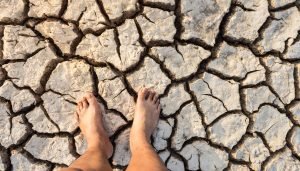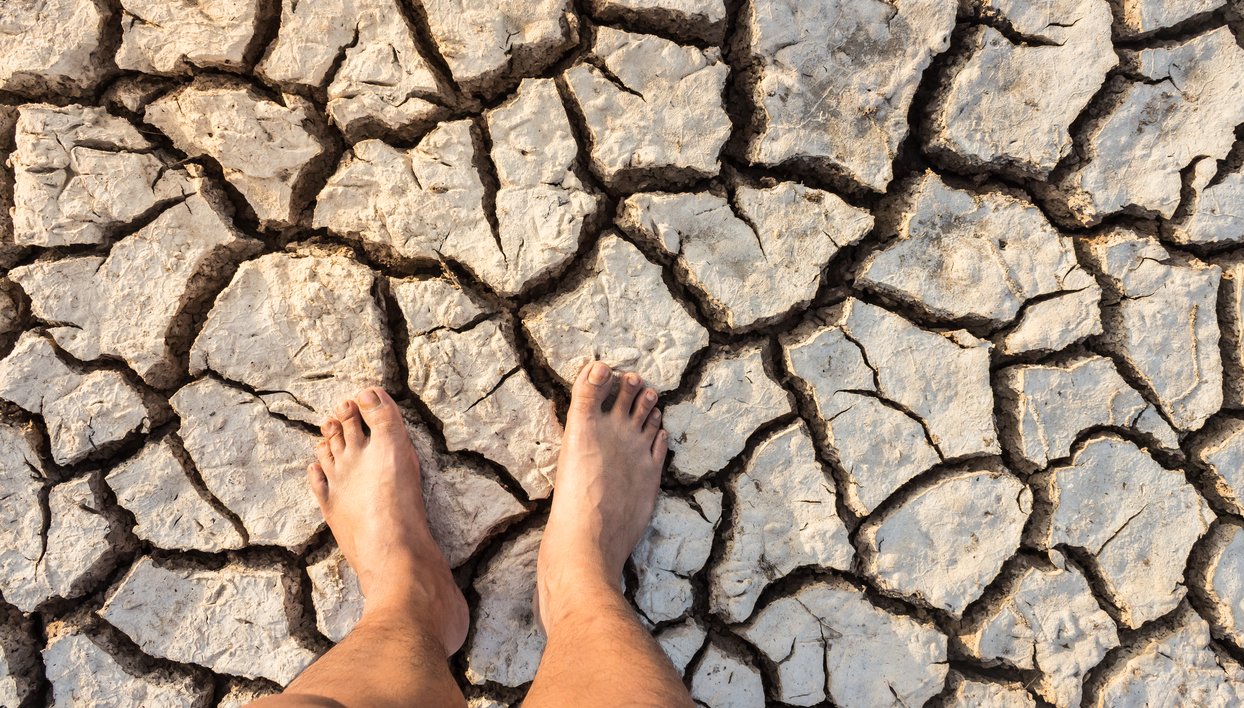Over the past decade, water shortages are becoming more common, limiting the availability of unlimited fresh water for irrigation, especially in the states of the American Southwest and California. Large swaths of green grass require constant watering to look healthy, and people in areas with water rationing are swapping their water-guzzling lawns for plants and features that look nice even when water access is restricted. Without unlimited water available year-round, people are trading their lawns for landscapes with xeriscaping.
Xeriscaping comes from the Greek word xero, meaning dry. There are 2 main principles in xeriscaping: choosing plants and landscape features that don’t need as much water, and using gardening techniques that direct water only to where it’s needed and avoiding losing water through evaporation or runoff.
Dry skin is a common problem, and the medical term for it is xeroderma, which uses the same Greek term (xero) as does xeriscaping. Successfully treating dry skin is similar to xeriscaping because it’s all about getting enough water to your skin cells while also minimizing losing water from your skin by evaporation.
How do you know you have xeroderma, or dry skin? Skin areas that are scaling or flaking, redness, skin cracks and itching are all signs of xeroderma. Dry skin is considered the “gateway” to other skin issues, and treating it successfully helps prevent future skin problems.
All day long we lose water through small gaps in our skin cells by a process called trans epidermal water loss. Water from our body is continuously being released by and through our skin, not just when we perspire from exertion or excitement.
As we age our skin produces less sebum, an oily substance that slows down evaporation through the skin, and trans epidermal water loss through evaporation can increase dramatically, especially in dry, windy or cold conditions. In the winter in cold climates we heat our homes, making the air inside even drier.
Frequent bathing actually encourages dry skin. After taking a bath or shower water evaporates from the cells making up the surface of your skin unless you can trap that water by applying a moisturizer before the water has a chance to evaporate.
Moisturizers improve dry skin by adding flexibility to the surface cells of your skin and by blocking evaporation. With many lotions, creams and ointments available, the more occlusive, thicker and “greasier” the moisturizer, the better it will block trans epidermal evaporation and trap water next to your skin. One of the greasiest but best at doing that is petroleum jelly, also known as Vaseline®. Moisturizers can also contain compounds that encourage water to stay on your skin, like lactic acid, salicylic acid, glycerin, urea and ammonium lactate.
A new addition to moisturizers is compounds called ceramides. Ceramides are found in high concentrations in healthy skin and at lower concentrations in dry or less healthy skin. Three essential compounds from this family have been shown to improve skin texture, skin integrity and dryness, found in a brand of moisturizer called CeraVe®.
Here are 6 Tips for Relieving Dry Skin:
- Keep your body hydrated.
Getting enough water also helps your skin look younger. By drinking extra fluids in the early part of the day you’ll avoid having to get up multiple times at night.
- Minimize your caffeine intake.
I love caffeinated coffee, but it increases water loss by stimulating urination. Not just found in coffee, caffeine hides out in energy drinks like Red Bull®, Monster® and 5-Hour Energy®. One of the best ways to quit caffeine without the misery of a withdrawal headache is to switch to tea, which has half the caffeine as coffee.
- Humidify your house.
Use a humidifier if you live in a dry climate or when heating your home. Warm, dry air accelerates trans-epidermal evaporation.
- Shower and bathe with warm, not hot water.
Using hot water encourages water loss from the skin. Bathing or showering with cooler water is better for dry skin.
- Pat skin almost dry, then apply moisturizer to seal the water in.
Apply moisturizer to damp skin within 10 minutes of stepping out of your bath or shower or washing your hands. This maximizes the ability of your moisturizer to trap water in your skin cells. Applying moisturizer to dry skin is better than nothing, but it will be more effective if you “seal in” some moisture as you apply it.

- Avoid using bath oil in your tub, despite what people may advise you.
Bath oils create a slippery surface inside your tub, not only making getting in and out of your bathtub a risky activity, but leaving you a slimy mess to clean up.


